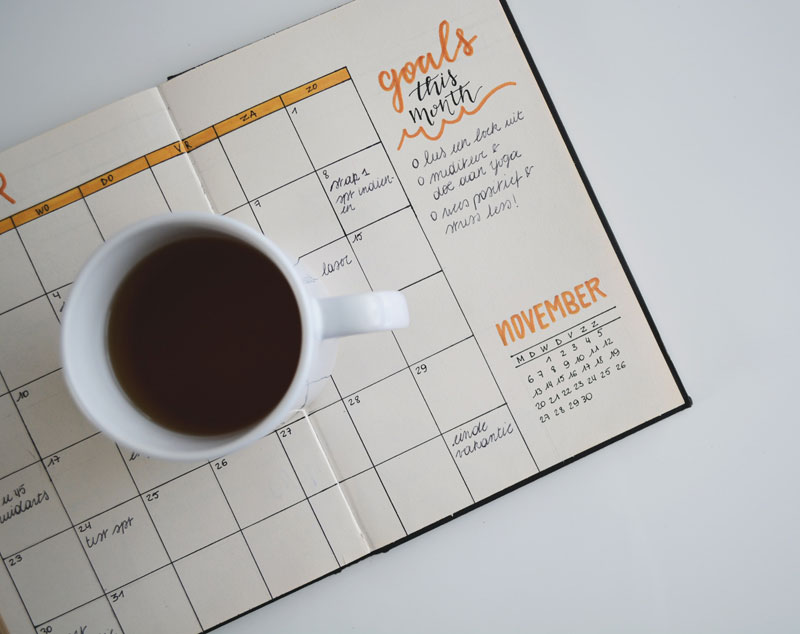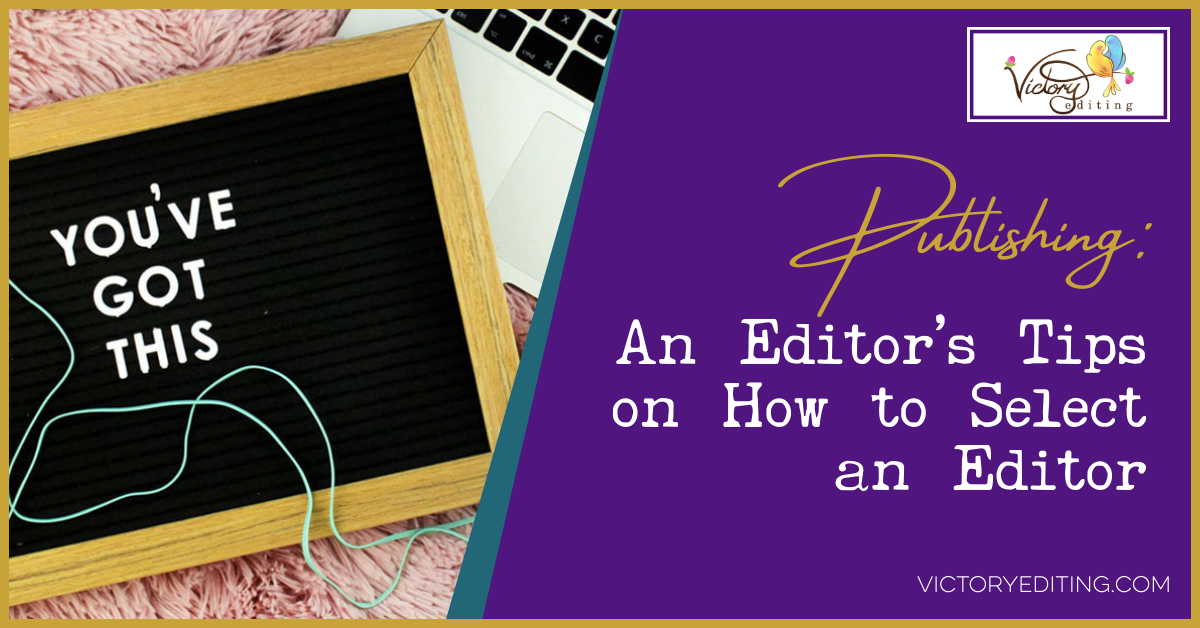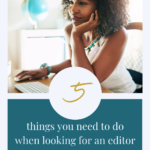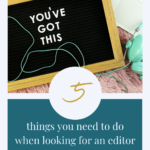As an indie author, or self-publisher, you have a lot of hats to wear. Not only are you worrying about writing a book, quite an endeavor on its own, you’re also assuming the publisher’s role. This means that to be successful, you’ll make arrangements for editing, proofreading, formatting, cover art, and final-pass readers. Let’s take a look at some of the issues surrounding the editing end of things.
If you prefer to listen to this article, click the audio player below.
What Sort of Editor Do You Need?
When you’re researching editing, particularly online, you’ll see a lot of terms thrown around, and they all seem to overlap or mean different things to different people. Story editing, line editing, copy editing, proofreading—what does it all mean? Courtney Milan has a great article about her production process, and in it she goes over some of the differences in the types of editing. You can read that article HERE. I’d go so far as to say it should be required reading for anyone thinking of self-publishing. You can also read my article, Great Expectations: What to Expect during the Editing Process.
Finding the Right Editor
Now that you’ve an idea the sorts of editing you’ll need, you have to actually choose your team and get your project scheduled. The first step is to compile a list of potential editors. You can find editors on authors’ forums, Google, and then the Association of Independent Publishing Professionals and the Editorial Freelancers Association also have directories. Another place to look is in the Acknowledgments section of indie books—most indies credit their production team, and that can be a great place to find recommendations for formatters, cover artists, and editors.

First things first:
Check availability. My experience in talking with other editors and authors is that good editors tend to book up in advance. Sometimes way in advance—up to six months even. Don’t wait until you type “The End” to start looking for an editor. The best time to begin your search is while you’re still working on your first draft and then schedule your second spot while you’re finishing up your first book (assuming you liked the experience and would like to use that editor again). The reason I say check availability first is because getting a sample and quotes, along with all the following advice, is useless if you need your book edited next month and the editor you’re contacting is booked six months out. So check with them and if they have an opening that meshes with your publishing schedule, then you can start looking at the next step.
Requesting Editing Samples
So what is next? Services offered and competency. You want to make sure that you and your editor are on the same page regarding what they’ll be doing for you. This is one of the areas the sample comes in play. You’ll want to request samples from each of the editors you’re considering. Make sure that you send the same sample to each editor. If you send them different sections of your manuscript, or the same section but some get one version and others get the piece after you’ve tweaked it again, then you aren’t comparing apples to apples.
Most of the samples you get back should be similar on a technical level, but it’s worth noting if an editor is wildly outside the pack—if most of the editors made fifty corrections but one editor made only twenty, that might bear investigation. It’s possible that the majority of your candidates did line edits, but the one outlier only did a proofread. You should also get a sense from the sample and email correspondence of whether or not the editor is someone you’ll enjoy working with.
Also, when you send your samples, please send an honest representation of the book as a whole. If you send a chapter that’s been through critique partners, beta readers, and you’ve self-edited it five times, but the rest of the book has only been gone over once, you’ll probably get an email down the road about how, due to the scope of the project changing, the quote will be increased, et cetera and so forth. Also, your project may be delayed because the editor underestimated the time it would take to complete.
Samples help both parties for lots of different reasons—never feel bad about requesting one.
Learning More About Potential Candidates
Something else you can do: take a look at the editor’s website and some of the projects they’ve worked on. Do they have a lot of work in your genre? This isn’t quite so important for line editing, proofreading, and final passes, but it’s absolutely vital if you’re looking for a story editor (also known as a content or developmental editor). Their advice in a genre they’re unfamiliar with is not very valuable as they have no idea the expectations of the genre.
It’s also a good idea to ask an editor what reference books they use on a regular basis if the information isn’t on their website. They should, at the very least, give you the name of a style guide and a dictionary — Chicago Manual of Style and Merriam-Webster Collegiate Dictionary would be my choices for fiction written in American English. For British English, New Oxford Style Manual and Oxford Dictionary are good choices. Grammar Girl (though a fantastic resource) is not a style guide, and Google is a search engine, not a dictionary, yet I frequently come across comments from people who have hung out editing shingles and those are their go-to sources. I find this perturbing, to say the least. That’s like a carpenter not owning a hammer.
Also, don’t be afraid to ask on forums if anyone has had experience with that editor, or even to send one or two of their clients an email asking about their experience.
Editor Pricing
So, after a week of vetting editors, you’ve finally short-listed those you’d like to work with. The final piece of the puzzle here is pricing. This can vary greatly depending on the individual editor and also the scope of the project. I’ve seen rates ranging from very low ($100.00 for 100,000 words) to very high ($5,000.00 for the same project).
While I don’t wish to speculate too much on someone else’s business model, I would urge you to apply some critical thinking when comparing quotes. Let’s consider the editor Jane Doe, who offers to do editing for a dollar per thousand words. Unless Jane is independently wealthy, she needs to make a living with her editing. Perhaps she’s just looking for supplemental income as she’s married or retired—we don’t know. But she probably needs to make at least $1,000 per month, and that’s being really generous and assuming that she enjoys a very low cost of living. But, okay, let’s go with that. That means she needs to edit at least ten books per month. That’s one book every other day if she takes weekends off. Do you really think she’s doing a thorough job if she’s working that quickly?
Let’s say she doesn’t have that much business and so she can devote more time to your project—why doesn’t she have more business (especially with such low rates)? As you can see, things aren’t adding up at this point when examining Jane. Perhaps she rushes through jobs, or perhaps she’s only offering proofreading (which is fine as long as everyone’s on the same page—again, this is where the sample comes in).

You got this!
Finding your production team can be daunting, but it’s very worthwhile. Once you have everyone in place and your process set up, everything should run like a well-oiled machine. Well, as much as anything in the writing and publishing world ever can… 🙂



